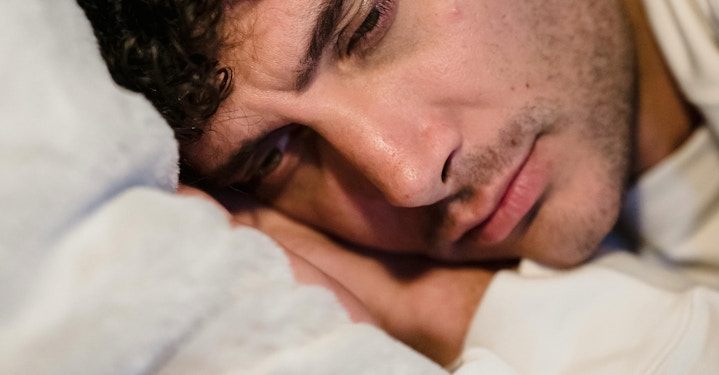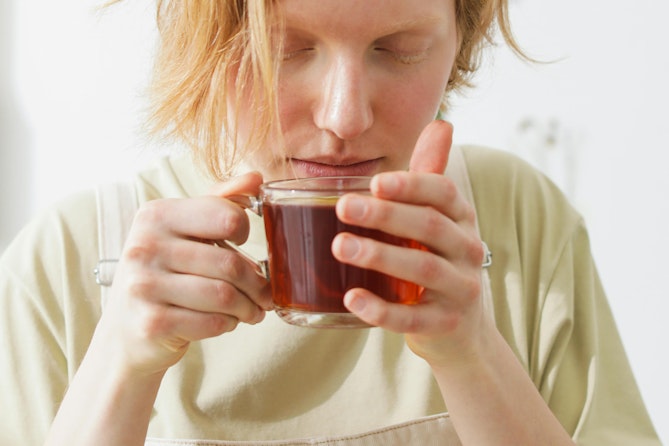If you or someone you care about is in crisis, text or call 988 or explore other crisis services for 24/7 help
How To Stop Drinking: A Real Guide for Real People

How To Stop Drinking: A Real Guide for Real People
Whether you want to cut back or quit completely, here’s what you need to know about changing your relationship with alcohol.

AUTHOR
Chrissy Holm
Writer, Project Healthy Minds

CLINICAL REVIEWER
Dr. Ulas M Camsari, MD
Board Certified Psychiatrist

AUTHOR
Chrissy Holm
Writer, Project Healthy Minds

CLINICAL REVIEWER
Dr. Ulas M Camsari, MD
Board Certified Psychiatrist
Oct 29
Est Reading Time: 13 mins
Key Points
You don’t need to hit rock bottom to get help if you’re worried about drinking.
Alcohol use disorder is a real medical condition that changes your brain, making it hard to quit on willpower alone.
Many treatments work well: therapy, medications, support groups, and treatment programs.
Stopping alcohol can be dangerous. Call 911 if you feel confused, are seeing things, have a fever, or are shaking badly.
You can choose to quit completely or cut back. Both approaches can work for different people.
Alcohol is everywhere—from wine with dinner and drinks after work to weekend barbecues or celebrating birthdays. What starts as casual alcohol consumption can gradually increase. In fact, according to a 2024 National Survey on Drug Use and Health (NSDUH), 43.1% of the 134.3 million Americans who drink alcohol have engaged in binge drinking (having 4+ drinks for women and 5+ drinks for men within two hours).
For many, drinking alcohol feels like the go-to answer for stress, fun, and socializing. But if you’ve been questioning your drinking habits, scrolling through sobriety content on TikTok, or wondering if it’s time for a change, you’re already taking an important first step toward learning how to stop drinking.
Here’s something important to know: You don’t need to hit rock bottom to decide you want something different. If you’re worried about your alcohol use, your concern is valid and worth exploring.

Alcohol Test
Free & Private
Takes 1 minute
Take our 1 minute, clinically-approved test to assess the severity of your alcohol use and find options for getting help.
Understanding standard drinks
Before discussing alcohol use patterns, it’s important to understand what is considered a “standard drink.” According to the National Institute on Alcohol Abuse and Alcoholism (NIAAA), one standard drink contains approximately 14 grams (0.6 ounces) of pure alcohol. This equals:
12 ounces of beer (5% alcohol content)
5 ounces of wine (12% alcohol content)
1.5 ounces of distilled spirits (40% alcohol content)
Understanding these equivalents helps you accurately track your alcohol consumption and recognize when drinking patterns may be concerning.
Understanding alcohol use disorder
Alcohol use disorder (AUD) is a mental health condition that makes it hard to control your drinking. Research shows that alcohol actually changes the brain circuits that help you make decisions. This explains why willpower alone often isn’t enough when trying to quit drinking.
The good news? Your brain can heal. When you cut back or stop drinking, the pathways in your brain can start to get better. But this process takes time, so be patient with yourself. AUD affects people of all walks of life, and it’s not because you’re not “strong enough” or “don’t try hard enough.” It’s a mental health condition that gets better with the right treatment and support.
Signs it might be time to change your relationship with alcohol
Dr. Amanda V. Porter, PhD, APRN, explains the key indicators: “When there are legal, financial, medical, occupational, or relationship consequences to their drinking.” Other behavioral signs that may indicate a drinking problem include:
Loss of control: Drinking more than planned or struggling to stop
Failed attempts: Difficulty sticking to cutting back or quitting drinking
Increased tolerance: Needing more alcohol for the same effect
Physical dependence: Feeling uncomfortable when alcohol is not available
Planning around drinking: Daily routines or social plans always include alcohol
Using alcohol as a solution: Turning to drinks when facing problems, stress, or loneliness
Michele Ross, LCSW says people who struggle with alcohol use disorder often tell themselves things like “I need to stop” or “I’ll only drink on the weekends,” yet struggle to stick with it. “Their preoccupation with drinking usually means that their work and relationships suffer, which can sadly cause the individual to turn to drinking more.”
✨ Steve Aoki has opened up about the feelings of nervousness before DJing that led him to drink, and about his motivation for quitting.
How drinking might be affecting you
Understanding how your drinking impacts your emotional well-being can help you recognize what you’re experiencing and your next steps:
If you feel in control of your drinking
You don’t often feel bad or worried after drinking
Drinking doesn’t get in the way of work, family, or friends
You feel like you can control when and how much you drink
What you can do: Keep monitoring how you feel and stay aware of any changes
If you’re starting to notice some effects
Sometimes feeling sad, worried, or guilty after drinking
Sometimes drinking more than you planned
Wondering if you might be drinking too much
What you can do: Consider tracking your drinking patterns or talking to someone you trust
If drinking is affecting your life more often
Often feeling anxious, depressed, or having trouble sleeping after drinking
Drinking to cope with stress or upset
Repeatedly breaking promises to yourself about drinking less
What you can do: Think about setting clearer limits or seeking support from friends, family, or professionals
If drinking feels like it’s getting out of control
Feeling uncomfortable when you can’t drink
Drinking is impacting your work, health, or relationships
Feeling like you can’t control your drinking even when you want to
What you can do: Consider reaching out for professional help or exploring treatment options
Treatment options that work
If you’re ready to make changes and learn how to stop drinking, know that alcohol addiction and substance abuse can be treated successfully. There are many different addiction treatment approaches that can be customized for your specific needs.
Therapy: Cognitive behavioral therapy (CBT) helps you identify and change thought patterns that lead to drinking. Dialectical behavior therapy (DBT) teaches skills for managing emotions. Motivational interviewing can help you clarify your personal reasons for changing.
Medications: Several medications can help reduce cravings and support recovery.
FDA-approved medicines
Naltrexone: Reduces the urge to drink and blocks the feel-good feelings from alcohol. Available as daily pills or a monthly shot.
Acamprosate: Helps reduce alcohol cravings and withdrawal symptoms. Taken as pills throughout the day.
Disulfiram: Makes you feel very sick if you drink alcohol, which helps stop drinking, but requires careful monitoring by a healthcare provider.
Other medicines that may help:
Gabapentin and Topiramate: May help with withdrawal symptoms and cravings.
Always consult with a healthcare provider or addiction medicine specialist to discuss which medication might be appropriate for your situation.
Treatment programs: Both inpatient (living at a treatment center) and outpatient programs (going home each day) offer organized, complete care. Many inpatient programs provide 24/7 medical care and intensive therapy. Outpatient programs let you keep working and maintain your life while getting treatment.
Support groups: Groups like Alcoholics Anonymous (AA) offer peer support through a 12-step approach. SMART Recovery uses science-based approaches for self-management. Other online communities can provide extra support and connection.
Healthcare team: You might consult with your regular doctor, a therapist who specializes in addiction, or possibly an addiction medicine doctor for comprehensive addiction treatment.
✨ Cara Delevingne has shared her journey to sobriety, the need for community through treatment, and how she’s worked through her healing process.
Approaches to change
When it comes to changing your relationship with alcohol, there are two main approaches. Both can work depending on your situation.
Complete abstinence means stopping all alcohol use. This approach might be best if you have severe AUD, experience strong alcohol cravings, have tried moderate drinking without success, or have medical conditions that make alcohol use risky.
Harm reduction focuses on reducing negative effects without requiring you to quit alcohol completely. This might mean drinking less often, avoiding binge drinking, choosing lower-alcohol drinks, or setting specific limits and sticking to them.
Andrew Levander, LMFT, M.A.C., explains the trade-offs: “Cutting back offers flexibility, gradual change, and immediate health benefits, but risks relapse, may not address underlying issues, and can create ambivalence. Quitting completely provides clear boundaries, health benefits, and personal growth, but can lead to social isolation, withdrawal symptoms, and fear of change.”
Practical ways to get started
“The thing that truly sets those who achieve some level of success apart is planning,” says Hannah Poe Klaassen, M.S., LPC. “If you get that lovely glimpse into an alcohol free life, and jump right in, it's like jumping off a ship into open water. Using that alluring taste of life on the other side to guide a plan for action will allow you to find a lifeboat, chart the path, and set sail.”
1. Use H.A.L.T.
When you feel like drinking alcohol, H.A.L.T. and ask yourself: Am I Hungry? Angry? Lonely? Tired? This simple tool can help you identify the real need that alcohol might be covering up, so you can address it directly.
2. Track patterns
For 1-2 weeks, write down when, where, why, and how much you drink. Note your emotions, who you’re with, and what happened to create awareness of your personal triggers and high-risk situations.
3. Set specific goals
Instead of vague goals like “drink less,” try specific goals when quitting drinking, such as: no drinking on weekdays, a maximum of 2 drinks per night, 30 days without alcohol, or a weekly alcohol budget of $50.
4. Plan for social situations
Alyssia Anderson, LCSW-S advises, “Have a plan in place before you go to places where you are going to be exposed to alcohol. Know how you are going to turn it down, what you are going to drink instead, have an answer for people if they ask you why you are not drinking, have an exit strategy if things become uncomfortable, create a sign for someone you trust to come and offer support if you signal them to keep you on track.”
5. Limit temptations
Remove alcohol from your home and change your social habits. Choose activities that don’t involve drinking, such as hiking, fitness classes, coffee shops, or volunteering.
6. Establish accountability
Share your goals with someone you trust (friends, family members, therapist, support group). Regular check-ins can be crucial to help you stay committed and accountable.
✨ Jamie Lee Curtis has maintained sobriety for over 25 years, building a successful career and meaningful life without alcohol.
What to expect when cutting back on drinking
Physical symptoms
People who drink alcohol every day or almost every day may experience withdrawal symptoms when stopping or cutting back. Mild symptoms might include irritability, trouble sleeping, or mild anxiety for a few days to weeks. People who have been drinking heavily for a long time may have more intense alcohol withdrawal symptoms like shaking, a fast heart rate, increased anxiety, or sleep problems.
Important difference: Craving is when your mind (physiological urge) really wants alcohol. Withdrawal symptoms are the physical and emotional effects your body feels when you stop drinking after using alcohol regularly.
Medical emergency warning signs
Seek immediate medical attention (call 911 or go to the emergency room) if you or someone else experiences:
Confusion or disorientation
Hallucinations (seeing or hearing things that aren’t there)
Fever
Persistent vomiting
Seizures
Dangerously high blood pressure
Going “cold turkey” can be dangerous for those with severe alcohol dependence. Always consult healthcare providers before attempting to quit drinking alcohol abruptly.
Emotional changes
Your brain chemistry needs time to readjust during withdrawal, which can cause mood swings, anxiety, or emotional ups and downs. This is normal and temporary—your brain is learning to make its own feel-good chemicals again instead of relying on alcohol.
Cravings and triggers
Expect alcohol cravings, especially in situations where you used to drink. Therapy can help you identify personal triggers and develop coping strategies for your sobriety journey. Mindfulness meditation, exercise, and distraction techniques work well. Lavender suggests using the “15-minute rule.” When you feel a craving, wait for 15 minutes and distract yourself with something else. Often, the urge will pass.
When to seek professional help
“When dependence is involved, seek help from a professional,” suggests Anderson. “If you try on your own for three months and it is not going as planned, seek help. For me, as a professional, your drinking is likely a cover for something else that you are trying to avoid; seeking help sooner rather than later could be a real game changer.”
Seek professional support and treatment options if you have:
Physical withdrawal symptoms (shaking, sweating, fast heartbeat)
Multiple failed attempts to quit or cut back on your own
Mental health concerns (depression, anxiety, or trauma)
Relationship, work, or legal problems related to your drinking
Thoughts of self-harm or hurting others
Getting help shows strength and self-awareness, not weakness. Mental health professionals who specialize in addiction are specially trained to help people navigate these challenges.
If you’re thinking about harming yourself or having suicidal thoughts, this is an urgent mental health crisis. Call or text 988 for immediate support, 24/7.
Building a healthier relationship with alcohol
Professional and social support
“Getting support from a therapist can be a game changer. Social support is also important,” emphasizes Karina Westrick, LPCC. Working with a counselor who understands alcohol challenges can help you learn new coping skills and work through the reasons you want to change your drinking.
Support groups (in-person and online) connect you to others who understand what you’re going through. Many people find it helpful to have friends and family who support their goals. This could mean spending time with people who don’t drink heavily, or finding new social activities that don’t center around alcohol.
✨ Margaret Cho has described her experiences with getting sober and treatment.
Developing healthy coping strategies
“When dealing with a craving or trigger in the moment, it’s important to have self-care strategies, like exercising or taking a bath,” Westrick explains. Building a toolkit of healthy ways to handle stress, boredom, or difficult emotions is essential.
Some effective strategies include:
Physical activities: regular exercise, walking, yoga, or sports to reduce stress or boost your mood
Relaxation techniques: deep breathing, meditation, or taking warm baths
Creative outlets: art, music, writing, or hobbies that keep your hands and mind busy
Social connections: calling a friend, joining a club, or volunteering
Handling setbacks with compassion
Changing your drinking habits isn’t always a straight line. Setbacks are a normal part of making any big change in life. It can be a combination of stress, social situations, or other challenging events in life (e.g., job changes, relationship problems).
Don’t let one slip turn into giving up. Instead, consider reaching out to someone you trust (a friend, family member, or therapist), and remind yourself why you wanted to make this change in the first place. Each setback is a learning opportunity to help prepare you for similar situations in the future.
✨ Jason Biggs has been open about hitting rock bottom and building a life in recovery.
What a sustainable relationship with alcohol looks like
As Westrick notes, “A healthier relationship with alcohol looks like making decisions that are aligned with your own values and self-respect. Becoming honest with yourself is key here.”
This might mean different things for different people. Some choose to quit drinking completely, while others learn to drink in moderation. The important thing is being honest about what works for your life, your health, and your goals. A healthy relationship with alcohol means you’re in control, alcohol isn’t controlling you.
Ready to take action?
Change is a process, and setbacks are a normal part of growth. As Alyssia Anderson explains: “The benefit of changing your drinking habit is that you are caring for yourself, which increases your self-esteem, decreases your self-doubt, and gives you motivation to achieve in other areas of your life.”
Whether you choose complete abstinence, moderation, or are still exploring your options, taking the first step to examine your relationship with alcohol is significant. With the proper support, practical tools, and patience with the process, positive change is possible.
If you’re ready to take the next step in quitting drinking, consider:
Exploring the Project Healthy Minds directory for services and support in your area
Contacting SAMHSA’s National Helpline at 1-800-662-HELP (4357)—it’s free, confidential, and available 24/7, 365 days a year
Speaking with your primary care doctor about your concerns regarding alcohol use
Researching therapists in your area who specialize in substance abuse and addiction
You don’t have to figure this out alone. Your concerns about drinking are valid, and seeking support shows courage. Know that support is available when you’re ready for it.
Browse Substance Use Support
The Healthy Minds Blog
Real talk on mental health, from real people and mental health experts who get it

Aug 7
Est Reading Time: 6 mins
Think you might be experiencing depression? Take this depression quiz to determine whether your symptoms could indicate a clinical depressive disorder.
Read More

Oct 22
Est Reading Time: 7 mins
Anxiety can feel overwhelming, but you’re not alone. We’ll guide you through the anxiety self-assessment, explain what the scores mean, and share helpful tips to move forward.
Read More
This content is for informational purposes only and is not a substitute for professional advice, diagnosis, or treatment. If you're in crisis, visit our Crisis Services page or call 988 for the Suicide & Crisis Lifeline. Call 911 if you're in immediate danger.
Project Healthy Minds does not endorse any specific services or providers.
© 2025 Project Healthy Minds Corporation. All rights reserved. Project Healthy Minds Corporation is a qualified 501(c)(3) tax-exempt organization. Tax ID Number: 82-3616589. By accessing or using this website, you agree to the terms, conditions, statements, disclosures and policies in our Terms of Use and Privacy Policy.
Loading Amplitude Guides and Surveys...
